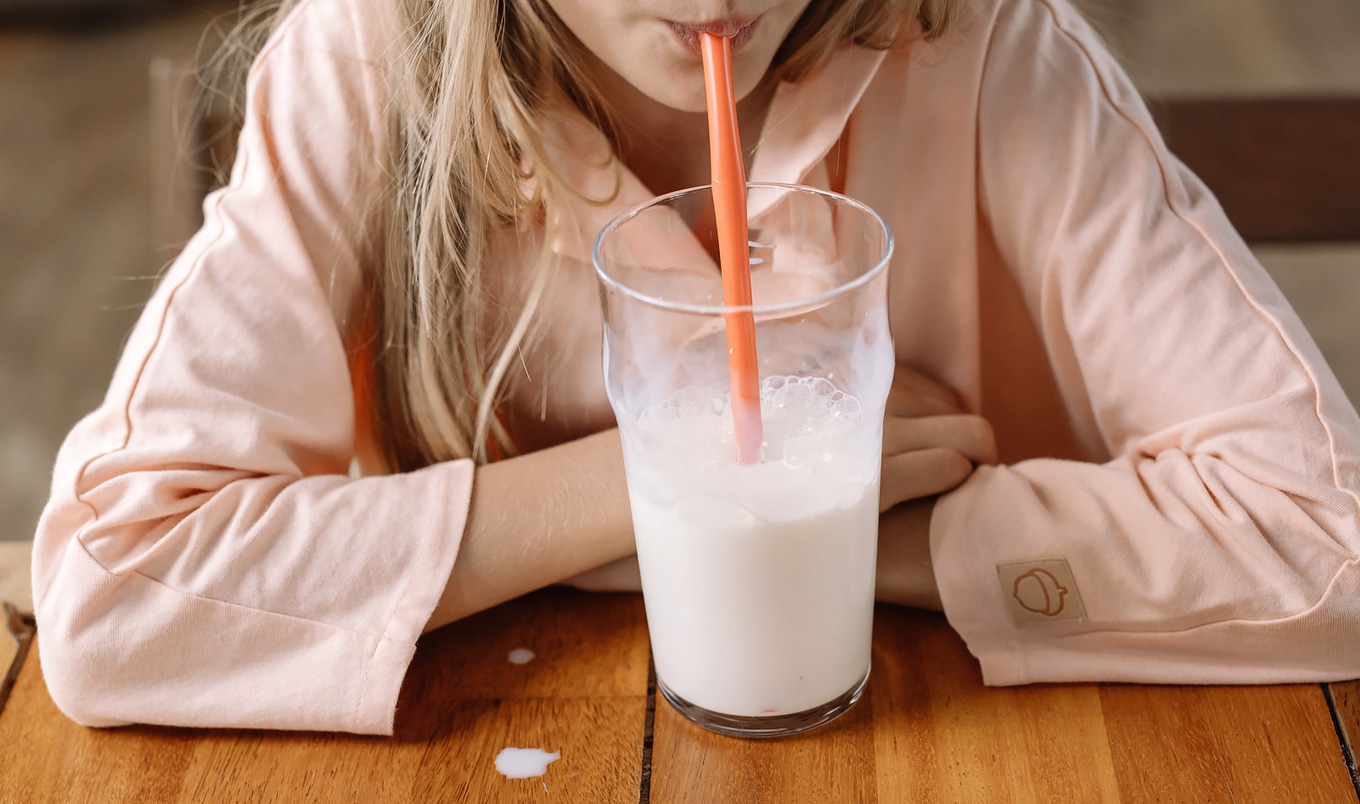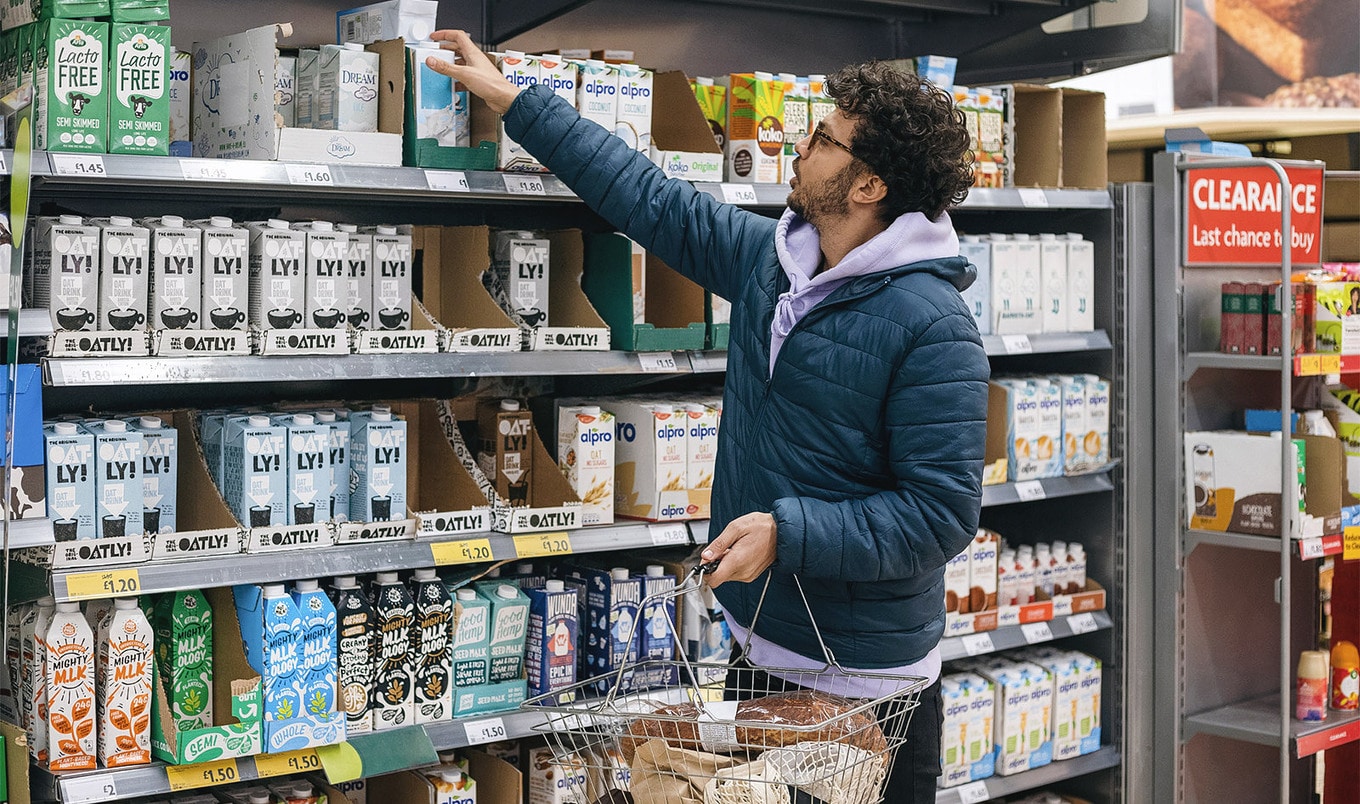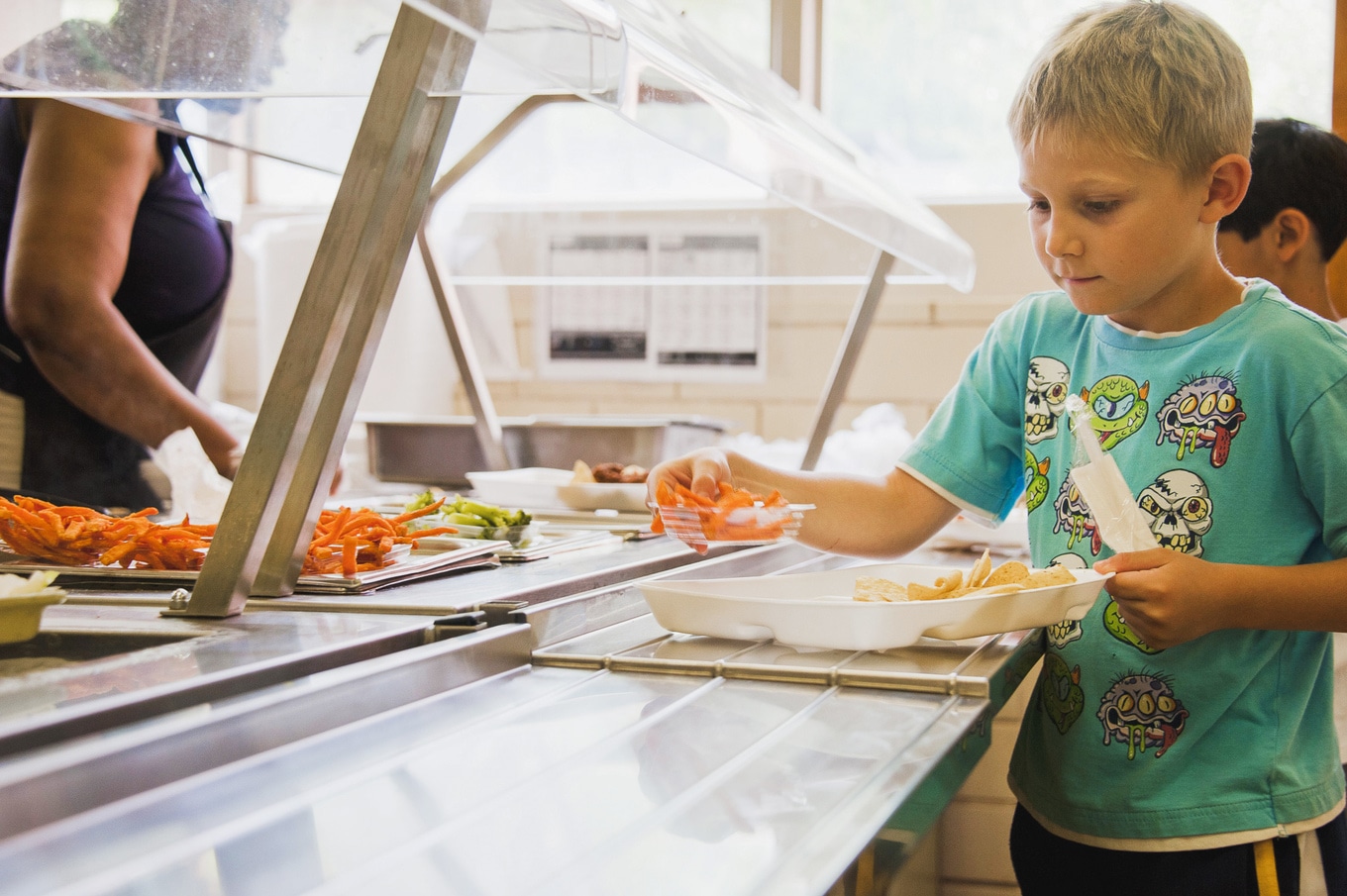For most American kids, a carton of cow’s milk is a part of everyday school life. And that’s because, for decades, federal regulations have required schools to offer it to them. They don’t have to drink it, but it’s always there. But as attitudes change, and more people start to understand the health, ethical, and environmental implications of drinking milk from a cow, is it time the long-standing relationship between the dairy industry and the US schooling system came to an end? Here’s more about why cow’s milk is so ingrained in American education, and why the future is looking increasingly dairy-free.
What is the US school milk program?
The US has several Child Nutrition Programs. One of them is the National School Lunch Program, which was introduced back in the 1940s when President Harry Truman signed the federal National School Lunch Act into law. This program, like the other Child Nutrition Programs, requires that schools offer fluid milk (which includes whole milk, low-fat milk, and lactose-free milk) to all children. They must offer at least two varieties of milk, one of which can be flavored, but it must be low-fat or fat-free.
There has been talk of excluding flavored milk recently, in a bid to reduce the amount of sugar and salt kids consume. But dairy as a whole isn’t going anywhere. The bottom line is, in the eyes of the government, cow’s milk in schools is here to stay.
 Pexels
Pexels
Why does America push milk in schools?
The government’s insistence that cow’s milk is always on offer for children doesn’t accurately reflect the wider population’s attitude to milk. In fact, cow’s milk consumption is actually in decline. But this isn’t new: according to the USDA, per capita, fluid milk consumption has been trending downwards for more than 70 years.
So if people have been losing interest in milk for years, how did it become such a staple on school lunch menus? The USDA maintains it is to do with nutrition, but according to investigative author Alissa Hamilton, PhD, who wrote Got Milked? The Great Dairy Deception and Why You’ll Thrive Without Milk, it turns out, it has a lot to do with the war.
“We’ve had school milk programs and milk in schools since the beginning of the century,” she told Vox back in 2015. “During World War II, we needed to boost milk production in order to make processed dairy products to send to soldiers overseas. But farmers weren’t producing enough to meet this demand because they weren’t getting paid enough. So the government decided, ‘Great, we’ll create demand for milk by giving milk to our kids, and that way we’ll have a demand for the fluid milk and we can make the processed products we need for soldiers.’”
And, according to Switch4Good—a nonprofit that advocates for dairy-free living—we can also go one step further back to discover how milk became a staple, to the first world war. “The US government started sending canned and powdered milk to soldiers overseas, and dairy farmers responded by ramping up production,” it notes in a blog post titled The Twisted History of Milk in America.
Farmers invested all their time and money in dairy to support the war effort, but when the war finished, they were left with a surplus. The 1930s was therefore a decade of farmer unrest and strike action. “To appease these farmers, the government created federal programs to artificially drive demand,” notes the nonprofit. The first? The 1940 Federal Milk Program for Schools. And six years later, the National School Lunch Act was introduced.
The milk surplus issue hasn’t gone away though. One century on from the first world war, the US is now dealing with a 1.4 billion pound cheese stockpile, because, due to government incentives over the years, the dairy industry is still producing more milk than people actually drink.
“People talk about food assistance programs as if they were created to help poor people out,” Andrew Novakovic, professor of agricultural economics at Cornell University, told CNBC in 2019 regarding the cheese surplus. “Yes that’s true, but almost all of the major food assistance programs were ideas that came from agriculture because we had too much of something.”
But the waste problem is also happening at the other end of the supply chain, as a lot of kids don’t actually want to drink the milk they’re offered in school. In fact, approximately $300 million in unopened milk cartons is thrown away by schools every year.
 Getty
Getty
Why are people avoiding dairy now?
In the 18 months before 2020, around 2,730 dairy farms shut down. The industry is declining for a very simple reason: a significant number of people just aren’t that fussed about drinking cow’s milk anymore. Some are opting for the ever-increasing range of plant-based milk choices on the shelves instead.
Unlike dairy, the global vegan milk industry is growing, with some estimates stating it could climb from nearly $20 billion in 2023 to more than $47 billion in the next 10 years. According to Future Market Insights, rising cases of lactose intolerance are one factor driving the shift to plant-based milk, but also the rising awareness of animal welfare.
To produce milk, cows have to be artificially inseminated. And after they have given birth, their calves are taken away, before the whole process begins again. But this process isn’t easy for the cows, and some farmers have even observed the animals grieving for their calves.
“Soon after birth, the farmer comes along, picks up the freshly washed and loved newborn calf, and heaves it into a trailer before driving off,” recalls one former farmer for Free From Harm. “The mother cow, naturally horrified and distressed out of her mind, chases alongside the trailer, bellowing and calling to her baby, while the confused and terrified calf cries back to the mother.”
Environmental concerns are another factor driving people away from milk. Animal agriculture does, after all, contribute massively to deforestation, water pollution, and emissions. Over the course of their life, just one cow will belch around 220 pounds of methane, a potent greenhouse gas, into the atmosphere.
Is the future of schools dairy-free?
While milk is still on offer, plant-based advocates have been trying to initiate a shift away from a heavy focus on animal products in school cafeterias.
In 2020, Switch4Good ran a campaign to remove dairy as a food group from the US dietary guidelines. They didn’t manage to have it taken away, but, as a result of the campaign, the 2020-2025 US Dietary Guidelines do now accept soy milk as a nutritionally equivalent alternative to cow’s milk. It’s the start of a long battle, but the nonprofit is now working with legislators to make soy milk available in all schools.
 Unsplash
Unsplash
And schools themselves are changing, too. They aren’t at a point where they can refuse to serve dairy, but things are undeniably shifting. In July 2022, for example, California became the first state in the US to support plant-based school meals with a $700 million investment. In Illinois, new legislation ensures that nearly two million children across its school districts have access to plant-based lunch choices.
And in February 2022, all public schools in New York City started participating in the Vegan Fridays initiative. On Vegan Fridays, all school menus are filled with plant-based options. Children can ask for non-vegan options if they want, but they are not offered by default (and, obviously, because of the federal guidelines, cow’s milk is still available).
Plus, in September, New York City’s first Chef’s Council (headed by celebrity chef Rachael Ray), started developing culturally relevant, plant-based recipes, as well as providing training for chefs working at the New York City Department of Education.
“Teaching students at a young age to eat healthy, nutritious meals is critical to setting them up for success,” said NYC Mayor and vegan food advocate Eric Adams in a statement. “The new Chefs Council will develop delicious, nutritious, culturally relevant meals for schools with direct input from students and parents. Through this partnership with [Wellness in the Schools] and our tremendous staff of school food workers, we will take school meals to the next level.”
For more on vegan schools, read:
JUMP TO ... Latest News | Recipes | Guides | Health | Subscribe









